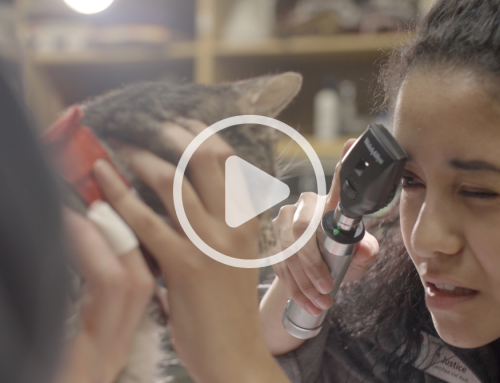by Stith Keiser | Blue Heron Consulting

How often do we read about or hear about the frustrations veterinary practice owners and practice managers have as a result of their inability to communicate with one another? We know communication is the key to success, yet we struggle with clear communication. Effective communication between the owner and the manager is a major factor in the success of the practice. Ineffective communication leads to misunderstandings which can have negative effects on hospital operations. Effective communication is comprised of a wide range of components and one of the core factors centers around communication styles themselves. The ability to recognize different communication styles allows for better outcomes for communication between owners and managers. What follows is a quick review of different communication styles to set the stage for a case study review. Everyone has a dominant communication style; however, effective communicators have the ability to recognize and understand their own dominant style. They recognize the need to use all four styles under certain circumstances and have the ability to match their communication style to their audience.
- Driver: People with this style tend to like details, processes, timelines, and well thought out plans. They like the ability to implement ideas and to play the “devil’s advocate.” When communicating with someone who has a dominant “driver” communication style, it is best to focus on the task at hand. Discuss the expected results. Discuss the facts, not feelings, and provide options.
- Intuitive: People with this style tend to look at the big picture. They like to “think outside the box,” do not get bogged down in the details, and may not have enough patience for details. They like to cut right to the chase and are not averse to risk and challenging conventions. When communicating with someone who has a dominant “intuitive” communication style, focus on the uniqueness of the idea to be presented, and emphasize future value or relate the impact of the idea to the future. Try to relate the topic of discussion to a broader concept or idea.
- Analytical: People with this style like hard data, real numbers, and very specific language. They have little patience for lots of feeling or emotional words. They are very thorough and disciplined in their thinking, may come across as cold or unfeeling, and may be too rigid or demanding of themselves and others. When communicating with someone who has a dominant “analytical” communication style, focus on the task. Provide analysis and facts, don’t get personal, and be prepared to answer “how” questions. Recognize the need to be accurate and logical.
- Amiable: People with this style find merit in how people think and feel. They value emotional language and connection. They are good listeners, are able to build deeper relationships, are supportive, patient, and diplomatic, and may conform to the wishes of others. They may be perceived as “touchy-feely.” When communicating with someone who has a dominant “amiable” communication style, be relaxed and agreeable. Be prepared to answer “why” questions. Agree clearly and often, use the word “we,” and don’t rush the conversation. Compliment the person as a collaborator and be a good listener.
Now let’s look at an example of a problem that a manager might bring to the owner and how the discussion might play out depending upon the owner’s dominant communication style.
As the practice manager, you recognize that new client numbers are not as robust as you would like, and you do not feel the practice website attracts enough new clients. You see the need to update the website and present the idea to the practice owner.
If the owner’s dominant communication style is driver, you might explain to the owner that new client numbers are decreasing, and a solution to the problem is to enhance the website. Prior to your meeting with the owner, you will have interviewed three different companies and found a designer who can create a new website that will drive traffic to the site. In addition to the website design, you will present options for management of the site, why that is important to drive traffic to the website, and the cost for the different options. You will discuss how long it will take to build the new website and when to expect new client numbers to improve.
If the owner’s dominant communication style is intuitive, instead of focusing on details and timelines, you will focus on how the new website will be different from all others in your area. The focus will be on why the hospital does what it does and how the hospital can help clients and patients. The website will be actively managed (unlike the current website that is not actively managed), thus driving traffic to the site and new clients to the hospital.
If the owner’s dominant communication style is analytical, you will need to set up a meeting with the website designer so that details and facts can be delivered accurately, and questions can be answered appropriately. Otherwise, you may not be able to provide all the details to the owner, thus leading to a failure in communication and the inability to move the website design forward.
If the owner’s dominant communication style is amiable, you will need to focus on how a new website will make people feel. You will emphasize to the owner that the new website will create a feeling of warmth, inclusion, and caring. It will speak to what the hospital can do for them and their pets. As a result, people will want to come to the hospital.
In addition to understanding your own communication style and that of the owner, managers should consider the following strategies for successful communication outcomes:
- Schedule weekly meetings without interruption. The meetings must be blocked out on the appointment calendar, and if needed, conducted outside the hospital setting.
- Present an agenda prior to the meeting and ask for input from the owner prior to the meeting.
- Discuss problems in a clear manner and provide potential solutions to the problems.
- Meeting minutes must be sent to the owner within 24 hours of completion of the meeting.
- Request additional meetings if needed when problems arise.
- Do not drop “bombshells” on the fly when the owner does not have time to process the information fully.
- When presenting change, you must demonstrate the financial impact of the change even if the owner’s dominant communication style is amiable. As a manager, it is your job to present a cost analysis, efficiency analysis, breakeven analysis, return on investment analysis, and a discussion of expected growth in productivity and revenue or a decline in expenses.
Effective communication between a practice manager and owner is critical and can result in a partnership that will allow you to foster growth within the hospital. As a manager, you must be able to have productive conversations with the practice owner in a clear and concise manner. To accomplish this result, consider the following process:
- Outline what you want and how it will be used. Include the impact of the quality of medicine in the conversation.
- Do the research up front so you can preemptively answer questions or address concerns.
- Outline benefits to the hospital.
- Have a specific plan in place with all the details. Present the who what, why, and how.
- Determine an approach that works for you and the practice owner.
- Have a direct, respectful conversation and be honest about the issues to be discussed and recommendations you provide. Be consistent and transparent in your communications.
- Have an agenda and come to the meeting with a written proposal. If relevant, share what the “experts” say about the issue.
Learning how to utilize the tools mentioned in this article and to communicate effectively will result in hospitals with positive outcomes for the clients, patients, and team members within the hospital. As a result, everyone benefits.




